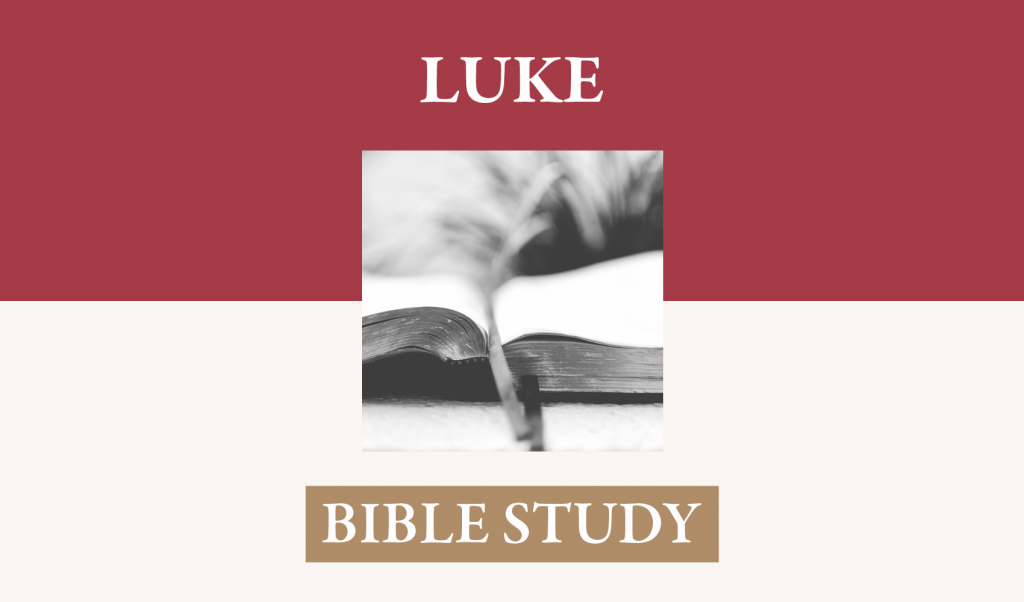I. The Context for the Anointing (7:1 – 35). Luke does not give a strictly chronological arrangement of events but connects historical events together in thematic fashion.
A. Luke collects and records events of messianic power in the life of Jesus (Verses 1-17).
- Jesus healed a beloved slave of a Roman Centurion at the request of Jewish elders.
- The Jews pled his worthiness and the munificence of his actions toward their nation. This showed that he probably had believed in the scriptural hope of the Messiah and had made sure that exposition of the Scripture would be available by building a synagogue (5). He knew what Jesus told the woman at the well in Samaria, “Salvation is of the Jews.” (John 4:22).
- The centurion was less keen on his worthiness than were the Jewish elders, saying, “Lord, I am not worthy for you to come under my roof.” Not only did he think himself unworthy of Jesus’ coming to him, he did not think himself worthy to come to Jesus.
- The centurion knew about the nature of authority and had concluded that Jesus had ultimate authority who could change nature, defy disease and death, and receive sinners (verses 7, 8). He knew that the Messiah had come on his own initiative and would work things in this world according to his own authority and will. That would include mercy toward the unworthy.
- Jesus perceived all this and said, “Not even in Israel have I found such a great faith.” More than the Jews that lauded his benevolence, the centurion understood that the authority of the Messiah included not only the defiance and correction of natural processes but would have authority to forgive sins, for this is the most pivotal content of faith.
- The slave was restored to good health.
- “Soon after,” Jesus raises from death the only son of a widow. Nature does not raise dead people; nature in its relentless devolution kills, saps the life from living things. Only one who is over nature, who understands why the processes of nature work toward death, can intervene. Only God, who both curses and rescues, can reverse the terror of the fait accompli of death.
- Two large crowds merged to witness this miracle of power over death, those following Jesus which amounted to a “large crowd” and a “sizable crowd” with the widow. This event would create a pool of witnesses who could give irrefutable testimony to the event.
- Apparently, neither the widow nor the crowd had knowledge that Jesus was there nor who he was. This work of power was also a work of sovereign compassion. She did not ask; he saw the case and felt compassion for her. Even so, when we enter into God’s saving purpose it is from his eternal disposition of love toward us, and thus prior to any action on our part toward him: “But God, being rich in mercy, out of the great love with which he loved us . . .” (Ephesians 2:4).
- Jesus told the dead boy to get up; he “sat up and began to speak.” This bestowal of life models the way in which spiritual life is restored to those dead in trespasses and sins. Jesus’ own resurrection showed his victory over death and is the source of both spiritual resurrection and physical resurrection unto glory for those united with him in the covenant of redemption (“made us alive together with Christ . . . and raised us up with him and seated us with him in the heavenly places in Christ Jesus, so that in the coming ages he might show the immeasurable riches of his grace in kindness toward us in Christ Jesus.” (Ephesians 2: 4-7).
- None could deny the wonder of what had been done. They feared in the presence of such a manifestation of power in the service of mercy and they glorified God. They recognized that “a great prophet” had arisen” and in him “God has visited his people” (16).
- This would serve as a foundation for the later preaching of the gospel “in Judea” (17) according to the Acts 1:8 command.
- For those who saw but did not believe, it demonstrates how hardened to evidence and spiritual truth sin has made us.
B. Luke records a lengthy narrative about John the Baptist (Verses 18 – 35). This narrative shows that Jesus had perfect confidence that his actions would fully satisfy the last prophet of two things: one, John the Baptist was indeed a true prophet, the last of the prophets, and, though imprisoned, the greatest of the prophets; two, Jesus was doing all that the Messiah should do and such knowledge would satisfy John of the completion of his mission.
- Upon hearing of the report of what Jesus was doing (18), John the Baptist asked for confirmation that he was Messiah. Jesus had not yet winnowed the threshing floor (Luke 3:17). He did miracles in the presence of these disciples of John the Baptist, and told them to return and report what they had seen and heard, citing promises about events that would accompany the appearance of the Messiah. He knew that upon hearing that, John the Baptist would take no offense and would wait patiently for the full manifestation of the new covenant (3; 8, 9a) and final judgment (3: 9b, 17).
- Jesus commented about the greatness of John the Baptist.
- He was great because he had no pretensions, no intimidation by worldly power, and complete devotion to his calling (24-27).
- He was great because he stood nearest Jesus in the prophetic line. Others had spoken about the Messiah in various times and in various ways (Hebrews 1:1; 1 Peter 1: 10-12), but John the Baptist saw Jesus personally, he handled him during the baptism introducing him into his ministry of identification with sinners through atonement. He was standing with Jesus in the moment of trinitarian identification with Jesus’ purpose to bring salvation to sinners through entering and overcoming their death (Matthew 3: 12-17).
- John spoke of and preached the kingdom of God, but died before the completion of the work of atonement. John’s query in itself showed that even as near as he was to the Messiah, pointing to him as the Lamb who takes away the sin of the World, those who have heard the gospel message that Jesus died according to the Scriptures, that he was buried, and the he rose on the third day had a greater knowledge of the prophesied Messiah even than John.
- Accepting John’s message or rejecting John’s message was the great divider between men in this unique period (Verses 29, 30). Those who were baptized by John, “acknowledged God’s justice.” They knew him to be just in requiring repentance from sin and faith in the one to whom John pointed and the “Lamb of God who takes away the sin of the world” (John 1:29, 30). Those who refused such condescension to this wild and radical preacher rejected the only message of salvation, retained their dignity and pride, but rejected God’s requirement of repentance.
- The refusal to be instructed either by John the Baptist or by Jesus, finding reason to be dissatisfied with both based on superficial observation indicated a spirit captive to sin. True wisdom would not be put off by superficialities but would see that the message of the one found absolute fulfilment in the person of the other. Jesus’ friendship with tax collectors and sinners was a true indication that his mission would culminate in an even more intimate communication and identification with them—he would take their place under wrath, he would bear their sins in his own body; he had come to die for sinners.
II. Luke records an act of true perception and devotion, a manifestation of pure and exalted wisdom. (Verses 36-39)
A. This event shows the response of a person who has understood completely why Jesus is the friend of sinners (37, 38). Her overflow of affection for Jesus and deeply expressed remorse for her sin indicated none of the judgmental detachment of the Pharisees. She was unintimidated even by the location of Jesus as he was reclining in the home of one of the Pharisees, a chief interpreter of the law of God. Her actions show both a deeper knowledge of the law as a schoolmaster than the Pharisee had, a more profound and relevant knowledge of Jesus, and a fitting manifestation of true affection: “If anyone love not the Lord, let him be anathema” (1 Corinthians 16: 22).
B. This event shows the infinite contrast between the nature of true faith and the hardness and deceit of unbelief. The striking difference between complete submission to Jesus by a sinner and the cold negative evaluation of Jesus as allowing sinners to come near is palpable. The Pharisee’s deadness to the truth of the human condition—his personal condition—is shown in that he has utterly no shock that Jesus would willingly and congenially come into his home for fellowship. O how Jesus should avoid and shrink from such a show of humble love from this woman, but how privileged Jesus must feel to be invited to his house for a meal. Jesus soon would reveal the deadly error of this man’s thinking.
III. A Simple Illustration of an Eternal Truth (Verses 40-43). Knowing the self-righteous spirit and thoughts of superiority that flooded the mind of Simon the Pharisee, Jesus told a simple story of degrees of indebtedness that would translate into degrees of gratitude.
A. Though a guest, Jesus takes the position of a teacher in order to correct a misperception of his host. Perhaps Simon thought Jesus would issue words of gratitude to Simon for his hospitality, but in light of the exuberant distraction in play, Simon probably perceived that a word of instruction was coming. He responded, therefore, to Jesus calling him “Teacher” (didaskale).
B. Jesus told a striking story that took less that fifteen seconds and yet contained an eternity of truth. A money lender had two debtors, one of whom owed ten times more than the other. He flatly forgave both of them their debts. Which of them would feel the deepest sense of gratitude?
C. So clear was the illustration that one could miss neither the answer nor the point.
- The one who knew that an unrepayable debt had been wiped off the books would feel the greatest sense of relief and virtually a lifetime of gratitude for such a merciful manifestation of forgiveness. From then on, every day of his life would be seen as a gift—free from debt and, therefore, free from prison. Jesus did not ask about the relative sense of indebtedness of the other, but focused only on the one who would sense his indebtedness as a forfeiture of freedom and joy in life.
- Simon answered, perhaps reluctantly even as Robertson quotes Plummer, “with an air of supercilious indifference,” by acknowledging that “the one whom he forgave more,” would also love more. Jesus confirmed the answer by saying, “You judged in the right way.” This is a confirmation of Simon but more than that a confirmation of the answer itself. He was saying, “A critical examination of this case will yield an answer that is straight, directly consistent with the stated facts of the case.” Those who truly love are those who sense the greatness of the mercy of forgiving indebtedness.
- Although it is biblically true that there are intensities of punishment for increasing perversities of sinfulness and violations of greater opportunities for embracing the truth (Matthew 11:20-24), that is not Jesus’ point here. He is saying that all who experience forgiveness will fully acknowledge the infinite debt that bowed them down and thus the infinite mercy and grace that saved them. In the reality of his lack of love for God and his diminished knowledge of the greatness of this sin, Simon showed no sign of faith.
IV. An Extended Description of gratitude (Verses 44-46). Jesus called specific attention to the woman (“Do you see this woman?”) in order for Simon to consider her in a way quite different from his original reaction. “Do you really see her?” Jesus compared what the woman did point by point with what Simon did not do. At every point, she manifest love for Christ which demonstrated the trueness of her faith in him as Messiah.
A. She cleansed his feet, probably quite dusty from his day’s activity, with her tears. The fact that the eternal Son of God had condescended to have human feet in order to walk among sinners, and finally to have them pierced to hold him on the cross was not lost on her. She worshiped even his feet, washed them and dried them with her hair.
B. She kissed his feet demonstrating her unfettered and superabounding acceptance of him in his complete person as her Lord, Master, and Savior. Nothing about Jesus could be repulsive, nothing off-putting, nothing avoided, but all of him as the Word made flesh should draw forth our absolute dependence and grateful love. Simon had not even given Jesus the customary kiss on the side of his face, much less would he have considered kissing his feet.
C. The woman anointed Jesus’ feet. He was Messiah, the anointed one, and she would claim him as her Messiah by pouring her expensive perfume on his feet. By those feet he would descend from Pilate’s hall as a condemned criminal; by those feet he would ascend the mount of Calvary for execution; by those feet he would be nailed, fixed, stabilized on the instrument of human torture. His feet should be anointed for this priestly work of sacrifice.
V. A fatal comparison and a Proclamation of Infinite Blessing (Verses 47-50). “For this reason,” that is, judging from all that she has done, and in light of the right answer you gave to my question, I am going to draw some conclusions.
A. In light of the display of love and unintimidated gratitude and worship, I would conclude, like you have done in the context of my story, that this woman’s sin’s are forgiven. What else explains this exuberance of self-denying, self-effacing love. Her sins, which were many, must in fact be forgiven, and she is conscious of the reality. This forgiveness has brought out this overflowing spring of grateful love.
B. You, however, Simon, did little, So Jesus implied. You showed even less regard for me than a normal traveler would receive from your hands. You, therefore, love little and have thus been forgiven of little. Jesus of course means that he is not forgiven at all, for to be forgiven only of a little means than one still is under debt and has not been forgiven. His debt was not just a little, but was of eternal significance. If Simon found Jesus to be ordinary and unworthy even of moderately kind attention, he certainly did not love him with the sense of his being a rescuer from eternal loss.
C. Jesus now turns his attention directly to the woman and, as he stated about her in the third person in verse 47 now says to her directly in the second person, “Your sins have been forgiven.” Other guests at the table, having heard all this, still find exception to his claims. They asked, “Who is this who even forgives sins?” Clearly, they did not know him as the worshiping woman knew him. They were unsure as to his authority to forgive sins, and thus had never experienced its reality.
D. Paul quotes the words from Habakkuk 2:4 in Romans 1, “The just shall live by faith,” or those who are just by faith shall live. Love does not save but is the atmosphere in which saving faith is exhibited. In this life love can never be perfect, and since love is the fulfilling of the Law (Galatians 5:14). Love in itself does not justify us. It is love, however, that points infallibly to the presence of justifying faith. Faith working through love unites a sinner to Christ (Galatians 5:6). Jesus saw that love was operative and could thus say, not only from his omniscience but from infallible observation, “Your faith has saved you; go in peace.” Love for God’s righteousness and for Christ as the perfect picture of righteousness combined with the knowledge that in him we can shed the debts of our unrighteousness and put on his perfect righteousness drives us to faith in him. By faith we gain everything that Christ has done and become heir to all that he has promised. Without love, however, that kind of faith would never be operative.




















